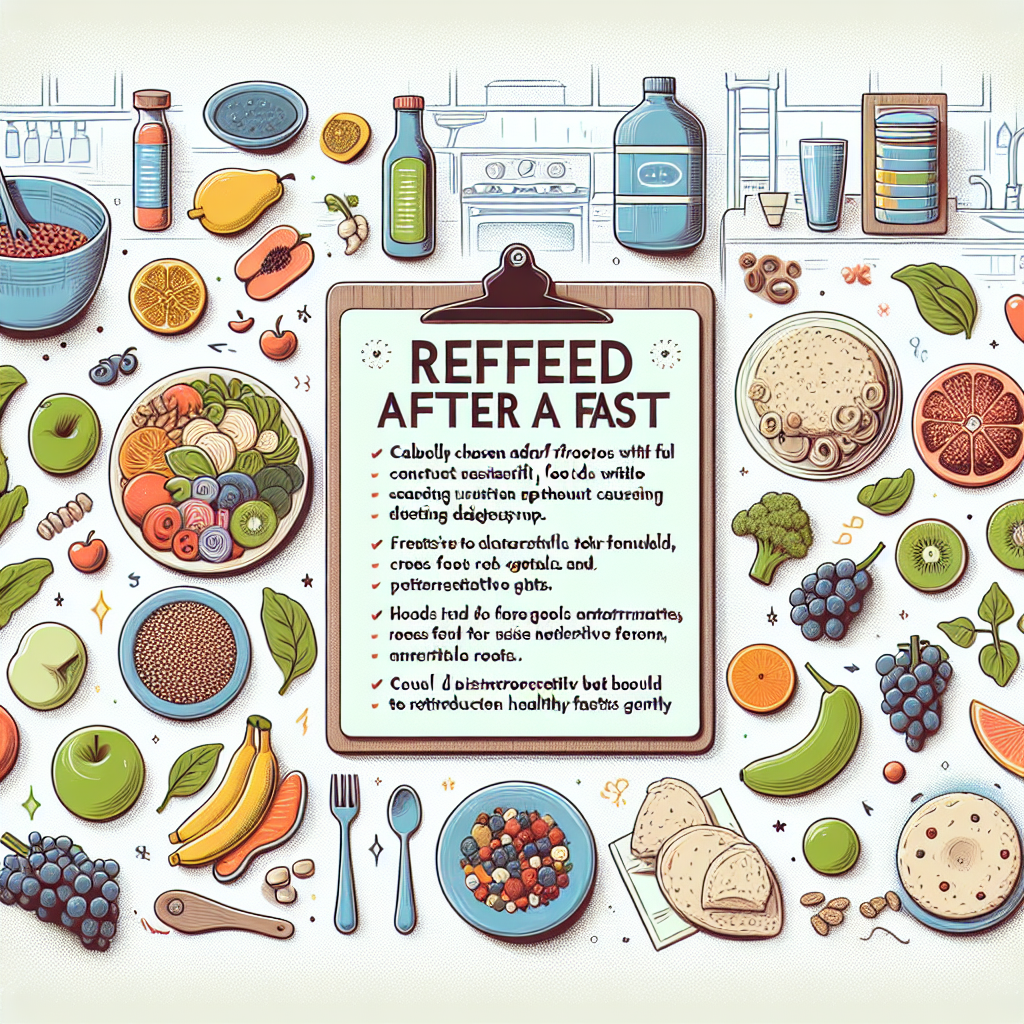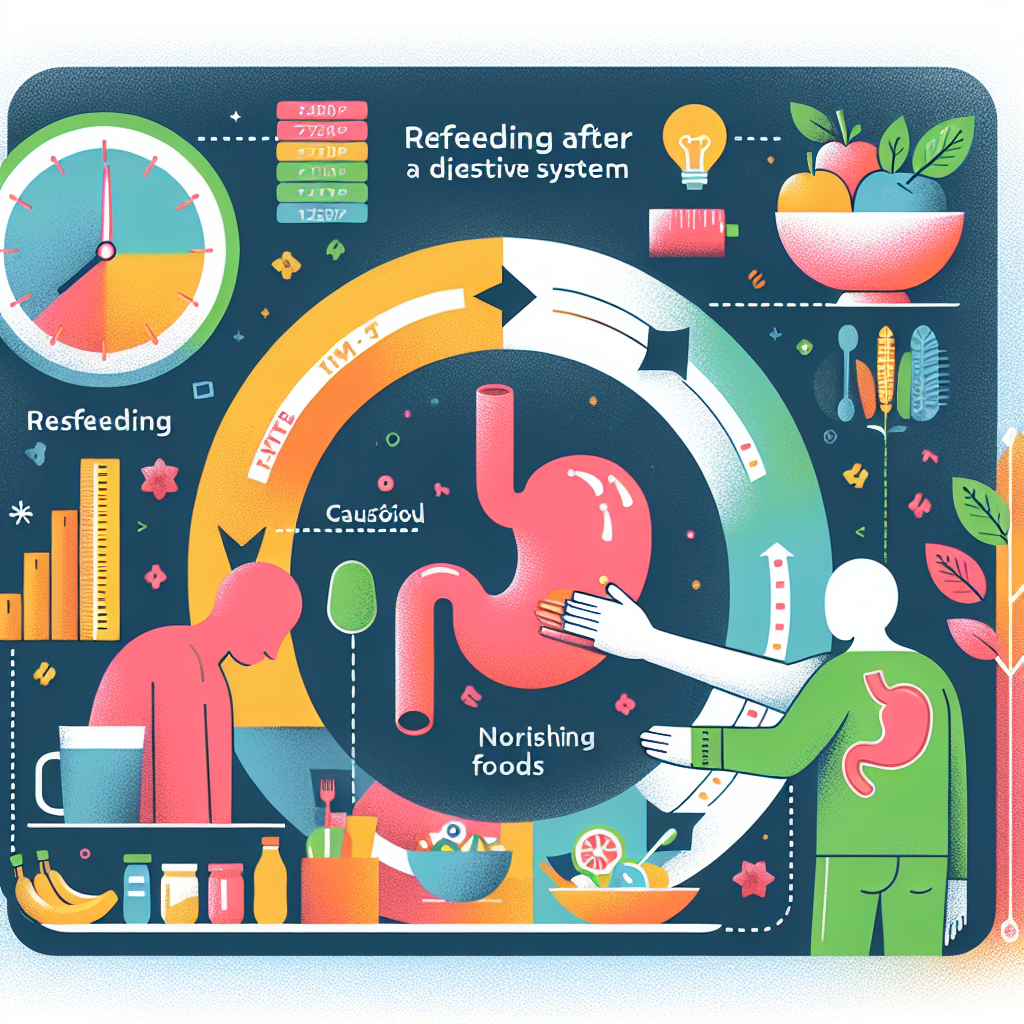How to Refeed After a Fast (Without Messing Up Your Gut)

Discover the right way to refeed after a fast without messing up your gut. Learn the best practices, foods to eat, and steps to take for a healthy and effective refeeding process. Don’t risk your gut health, get informed now. Click here to start your journey towards a healthier refeeding.
Understanding the Process of Refeeding After a Fast
Fasting, a practice that has been around for centuries, is often used for spiritual, health, or weight loss purposes. While the benefits of fasting are well-documented, the process of refeeding after a fast is equally important and often overlooked. Refeeding refers to the period of time immediately following a fast when food is reintroduced into the diet. If done incorrectly, refeeding can lead to discomfort, bloating, and other digestive issues. Therefore, understanding the process of refeeding is crucial to maintaining gut health and reaping the full benefits of your fast.
The human body is a complex system that adapts to changes in diet and lifestyle. During a fast, the body shifts into a state of ketosis, where it burns fat for energy instead of glucose. This metabolic shift is beneficial for weight loss and overall health, but it also means that the digestive system slows down and becomes less active. As a result, reintroducing food too quickly or in large quantities can overwhelm the digestive system and lead to discomfort.
To avoid this, it’s recommended to start the refeeding process slowly and gradually. Begin with small amounts of easily digestible foods, such as broth, cooked vegetables, or fruit. These foods are gentle on the stomach and provide essential nutrients that the body needs after a fast. It’s also important to chew your food thoroughly to aid digestion and absorption.
Hydration is another key aspect of refeeding. During a fast, the body can become dehydrated, so it’s important to drink plenty of water during the refeeding process. However, avoid drinking large amounts of water immediately before or after meals, as this can dilute stomach acid and impair digestion.
Probiotics can also be beneficial during refeeding. These beneficial bacteria support gut health and aid in digestion. They can be found in fermented foods like yogurt, kefir, and sauerkraut, or taken as a supplement. However, it’s important to introduce probiotics gradually, as they can cause bloating and discomfort in large amounts.
While the refeeding process is important, it’s also crucial to listen to your body. Everyone’s body reacts differently to fasting and refeeding, so it’s important to pay attention to how your body feels and adjust your diet accordingly. If you experience discomfort or digestive issues, it may be a sign that you’re reintroducing food too quickly or that certain foods aren’t agreeing with your body.
In conclusion, refeeding after a fast is a delicate process that requires careful planning and attention. By starting slowly with easily digestible foods, staying hydrated, and introducing probiotics gradually, you can support your gut health and make the transition back to a regular diet as smooth as possible. Remember, the goal of refeeding is not just to end the fast, but to nourish your body and support your overall health. So take your time, listen to your body, and enjoy the process of refeeding.
Steps to Safely Refeed and Protect Your Gut Health After Fasting

Fasting, a practice that has been around for centuries, has recently gained popularity due to its potential health benefits such as weight loss, improved mental clarity, and increased longevity. However, the period following a fast, known as refeeding, is just as crucial as the fast itself. If not done correctly, refeeding can lead to discomfort and potential damage to your gut health. This article will guide you through the steps to safely refeed and protect your gut health after fasting.
The first step in refeeding is to start slow. After a period of fasting, your digestive system has been in a state of rest and needs time to adjust back to processing food. Therefore, it’s essential to reintroduce food gradually to avoid overwhelming your digestive system. Start with small, easily digestible meals. Foods such as bone broth, cooked vegetables, and soft fruits are excellent choices as they are gentle on the stomach and provide essential nutrients.
Next, it’s important to focus on hydration. During a fast, your body can become dehydrated, so it’s crucial to replenish your fluids during the refeeding process. Drinking plenty of water will not only help to rehydrate your body but also aid in digestion and help to prevent constipation. Additionally, consuming drinks with electrolytes can help to restore the balance of minerals in your body that may have been depleted during the fast.
Another key aspect of refeeding is to prioritize protein. Protein is essential for repairing tissues and supporting immune function. However, it’s important to choose easily digestible sources of protein during the refeeding process. Foods such as fish, eggs, and tofu are excellent choices as they are high in protein but gentle on the stomach.
Furthermore, it’s crucial to avoid foods that are high in sugar and processed carbohydrates during the refeeding process. These foods can cause a rapid increase in blood sugar levels, leading to discomfort and potential damage to your gut health. Instead, focus on consuming complex carbohydrates such as whole grains, legumes, and starchy vegetables. These foods are not only more nutritious but also provide a steady release of energy, helping to stabilize blood sugar levels.
Lastly, it’s important to listen to your body during the refeeding process. Everyone’s body reacts differently to fasting and refeeding, so it’s crucial to pay attention to how your body is responding. If you experience discomfort or digestive issues, it may be a sign that you’re reintroducing food too quickly or that certain foods aren’t agreeing with your system. In such cases, it may be beneficial to consult with a healthcare professional or a nutritionist to help guide you through the refeeding process.
In conclusion, refeeding after a fast is a delicate process that requires careful planning and attention. By starting slow, staying hydrated, prioritizing protein, avoiding high-sugar and processed foods, and listening to your body, you can safely refeed and protect your gut health after fasting. Remember, the goal of fasting is not just to abstain from food but to improve your overall health and wellbeing. Therefore, it’s essential to approach the refeeding process with the same level of care and intention.
The Right Way to Refeed: Maintaining Gut Health After a Fast
Fasting, a practice that has been around for centuries, has recently gained popularity for its potential health benefits such as weight loss, improved metabolic health, and increased longevity. However, the period following a fast, known as refeeding, is just as crucial as the fast itself. If not done correctly, refeeding can lead to discomfort and potential damage to your gut health. This article will guide you on how to refeed after a fast without messing up your gut.
The process of refeeding involves gradually reintroducing food into your system after a period of fasting. It’s essential to approach this process with care, as your digestive system has been in a state of rest and needs time to adjust to processing food again. Abruptly introducing large amounts of food can lead to a condition known as refeeding syndrome, characterized by nausea, bloating, cramps, and even severe metabolic disturbances.
To avoid these complications, it’s recommended to start with small, easily digestible meals. Foods rich in fiber, such as fruits and vegetables, are an excellent choice as they can help stimulate digestion and restore gut health. However, it’s important to note that these should be introduced gradually to prevent overwhelming your digestive system.
In addition to fiber, probiotics are another key component in maintaining gut health during refeeding. These beneficial bacteria can help restore the balance of your gut microbiome, which may have been disrupted during the fasting period. Foods such as yogurt, kefir, and fermented vegetables are rich in probiotics and can be beneficial during the refeeding process.
Hydration is another crucial aspect of refeeding. During a fast, your body may become dehydrated, and reintroducing food can further deplete your body’s water reserves. Therefore, it’s important to drink plenty of fluids during the refeeding process. This not only helps to prevent dehydration but also aids in digestion and nutrient absorption.
While it’s important to reintroduce a variety of foods to ensure a balanced diet, there are certain foods that should be avoided during the initial stages of refeeding. These include foods high in fat and sugar, as they can be difficult to digest and may lead to discomfort. Similarly, alcohol and caffeine should be avoided as they can dehydrate the body and disrupt the gut microbiome.
Lastly, it’s important to listen to your body during the refeeding process. Everyone’s body responds differently to fasting and refeeding, so it’s crucial to pay attention to how your body reacts. If you experience discomfort or other adverse effects, it may be a sign that you’re reintroducing food too quickly or that certain foods aren’t agreeing with your system.
In conclusion, refeeding after a fast is a delicate process that requires careful planning and execution. By starting with small, easily digestible meals, gradually introducing fiber and probiotics, staying hydrated, and avoiding certain foods, you can help maintain your gut health and make the transition from fasting to eating a smooth and comfortable one. Remember, the goal of fasting isn’t just about the fast itself, but also about maintaining a healthy lifestyle in the long run.